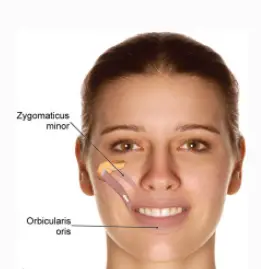
Having been reminded that I need to work on my facial expressions if I am serious about making YouTube videos. And after researching the facial expressions that will show make a person attractive and approachable, the next step to my improvement will be to practice, of course.
Good thing there is another video by Shreya TV discussing the facial exercises for one to be able to show emotion instantly. Because, let’s face (pun unintended) it, even though we think that we are showing genuine emotion of happiness, for example, our face just does not show it well.
And according to researchers- experts in social psychology and body language- the face and its expressions are the most influential and highly impactful gauge of a person’s emotions.
For most people and more likely for introverts like me, smiling and generally showing facial expressions is awkward, especially when meeting new people. And researchers identified the cause of this self-consciousness to be the lack of facial muscle movement. As in any muscle, when not used as frequently as it should, the muscle atrophies and lose its ability to function properly.
So what should be done? Exercise! Here are the three steps that are shown in the video focusing on the facial muscles responsible for showing emotion.
Zygomatic Muscle Exercise
These muscles are located in the cheek area and extend between the zygomatic bone and the corner of the mouth. Its responsibility is to pull the angle of the mouth up and toward the side. Accordingly, the reason that we do not openly smile is that these muscles are not flexed often.

A simple exercise for these muscles is to say a long “eeeee” with the mouth wide to the side and then a long “ooooo” with the mouth rounded. Do this exercise three times a day for ten days to relax these muscles and they can then be used on a whim.
Jaw Movement Exercise
The jaw muscles when not used often become stiff and rigid. This results in words not being pronounced correctly and audibly. So to flex the jaw muscles, the exercise to be done is to lift the chin up. Open the jaw as much as you can with a long “aaaaaaaaa” sound. Then close the jaw with a long “oooooo” sound. As with the zygomatic muscle exercise, do this for at least ten days as well.
With this exercise, you can immediately feel the stretch in your jaw area and will help you to smile instantaneously. Not only that, but this jaw exercise will also help you pronounce your vowels correctly.
Emotion Expression Exercise
The third exercise to improve facial expression is to practice two common facial expressions. Researchers identified the common expressions as:
- Happy
- Sad
- Fear
- Anger
- Contempt
- Disgust
- Surprise
Pick out two of the above-listed facial expressions and practice making them in front of the mirror. In the video, the facial expressions chosen for exercise are happy and sad emotions. And I agree with the choice because what I want to improve on is my happy face. God knows I often look so serious.
But I digress, anyway, to practice the happy emotion, face the mirror, and smile. Make sure the smile takes the shape of a “U” or at least close to it. And for the sad emotion, make an upside-down “U” shape with your mouth. Accordingly, this is the universal expression for sad.
Practice these three exercises until you get the hang of them and use them in your daily conversations. People will be sure to react in a positive way when you show emotions openly.
Tips on how to show emotion
Learning to effectively express emotions is an important part of building strong relationships and communicating effectively with others.
Whether it’s showing happiness, sadness, anger, or any other emotion, being able to express your feelings can help you connect with others on a deeper level and build trust and understanding.
In this guide, we’ll explore some simple exercises that you can use to practice showing emotions. By practicing these exercises, you can become more aware of how you’re expressing your emotions, and learn to communicate more effectively with others. So, let’s get started!
- Practice facial expressions: Facial expressions are a great way to show emotions. Look in a mirror and try to make different facial expressions to match different emotions. For example, try smiling to show happiness, frowning to show sadness, or raising your eyebrows to show surprise.
- Use body language: Your body language can also convey emotions. Stand up straight and tall to show confidence, slump your shoulders to show sadness, or cross your arms to show defensiveness.
- Practice tone of voice: Your tone of voice can also convey emotions. Try speaking in different tones to match different emotions. For example, try speaking in a high-pitched, excited tone to show happiness, or in a low, monotone voice to show sadness.
- Use props: Props can be a fun way to help you express emotions. For example, hold up a smiley face emoji to show happiness, or a tissue to show sadness.
Remember, practicing these exercises can help you become more aware of how you’re expressing your emotions, and can help you communicate more effectively with others.
Please share your thoughts or ideas about How To Show Emotion: 3 Simple And Easy Facial Exercises in the comments below.
